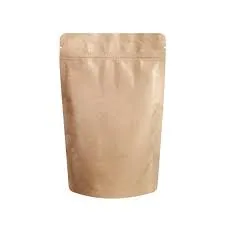- Afrikaans
- Albanian
- Amharic
- Arabic
- Armenian
- Azerbaijani
- Basque
- Belarusian
- Bengali
- Bosnian
- Bulgarian
- Catalan
- Cebuano
- chinese_simplified
- chinese_traditional
- Corsican
- Croatian
- Czech
- Danish
- Dutch
- English
- Esperanto
- Estonian
- Finnish
- French
- Frisian
- Galician
- Georgian
- German
- Greek
- Gujarati
- haitian_creole
- hausa
- hawaiian
- Hebrew
- Hindi
- Miao
- Hungarian
- Icelandic
- igbo
- Indonesian
- irish
- Italian
- Japanese
- Javanese
- Kannada
- kazakh
- Khmer
- Rwandese
- Korean
- Kurdish
- Kyrgyz
- Lao
- Latin
- Latvian
- Lithuanian
- Luxembourgish
- Macedonian
- Malgashi
- Malay
- Malayalam
- Maltese
- Maori
- Marathi
- Mongolian
- Myanmar
- Nepali
- Norwegian
- Norwegian
- Occitan
- Pashto
- Persian
- Polish
- Portuguese
- Punjabi
- Romanian
- Russian
- Samoan
- scottish-gaelic
- Serbian
- Sesotho
- Shona
- Sindhi
- Sinhala
- Slovak
- Slovenian
- Somali
- Spanish
- Sundanese
- Swahili
- Swedish
- Tagalog
- Tajik
- Tamil
- Tatar
- Telugu
- Thai
- Turkish
- Turkmen
- Ukrainian
- Urdu
- Uighur
- Uzbek
- Vietnamese
- Welsh
- Bantu
- Yiddish
- Yoruba
- Zulu
Understanding the Conversion from 24 Gauge to Millimeters for Accurate Measurements
Understanding the Conversion of 24 Gauge to Millimeters
When it comes to metalworking, jewelry design, and crafting, understanding wire gauge systems and their conversions is essential for achieving the desired results. One commonly used gauge system is the American Wire Gauge (AWG), which assigns a numerical value to the diameter of the wire or material. In this article, we will explore the 24 gauge size, its properties, applications, and the conversion from gauge to millimeters.
What is 24 Gauge?
24 gauge wire is a popular size within the American Wire Gauge system. The wire gauge system works on a logarithmic scale, where a lower gauge number corresponds to a thicker wire, and a higher gauge number refers to a thinner wire. Specifically, 24 gauge wire has a diameter of approximately 0.0201 inches (or 0.511 mm). This makes it relatively thin compared to other gauge sizes, but it provides sufficient strength and flexibility for numerous applications.
Properties of 24 Gauge Wire
The properties of 24 gauge wire make it suitable for various uses. Being thin, it is lightweight and easy to handle, which is an advantage in crafts or jewelry making where intricate designs are involved. Additionally, 24 gauge wire is often made from materials like copper, silver, or stainless steel, each providing unique attributes such as conductivity for electrical applications or tarnish resistance for jewelry.
The flexibility of 24 gauge wire allows for easy bending and shaping, making it an excellent choice for wiring projects, intricate jewelry designs, and craft applications. However, its thinness also means it may not be ideal for heavy-duty applications where more robust wire gauges would be necessary.
Applications of 24 Gauge Wire
24 gauge wire finds its applications in various fields. In the electrical industry, it is frequently used for low-power signal transmission, making it a common choice for telephone and speaker wires. In the realm of crafting and jewelry making, it is often employed for making delicate earrings, necklaces, and bracelets due to its malleability and aesthetic appeal.
24gauge to mm

In model building and some electronics projects, 24 gauge wire can also come in handy for creating connections where space is limited. Its thin profile allows it to fit into tight spaces while still providing the necessary conductivity or mechanical strength.
Converting 24 Gauge to Millimeters
Conversion between gauge sizes and millimeters can often be a source of confusion for many. The conversion from 24 gauge to millimeters is relatively straightforward, as mentioned earlier. To recap, 24 gauge wire has a diameter of approximately 0.511 mm.
For those looking to understand how to convert other gauges to millimeters, it’s important to note that there are numerous gauge conversion charts available. These charts provide a clear reference for all standard wire gauges and their corresponding millimeter measurements, which can be extremely helpful when sourcing materials or setting specifications for projects.
Why It Matters
Understanding the conversion between wire gauge sizes and millimeters is critical for efficiency, accuracy, and consistency in various projects. Incorrect measurements can lead to a mismatch in wire sizes, affecting performance, aesthetics, and structural integrity. This is particularly important in projects where precise wiring is crucial, such as in electronics or specific forms of design work where wire visibility matters.
Conclusion
In conclusion, the conversion of 24 gauge wire to millimeters provides essential information for anyone involved in metalworking, crafting, or electrical work. Measuring approximately 0.511 mm in diameter, 24 gauge wire serves various applications, from electronics to intricate jewelry-making. By familiarizing oneself with wire gauge systems and their conversions, crafters and professionals alike can ensure they use the right materials for their projects, leading to more successful and aesthetically pleasing outcomes. Whether you are a seasoned artist or a novice hobbyist, understanding the specifics of gauge will help enhance your creativity and efficiency in any wire-related endeavor.













